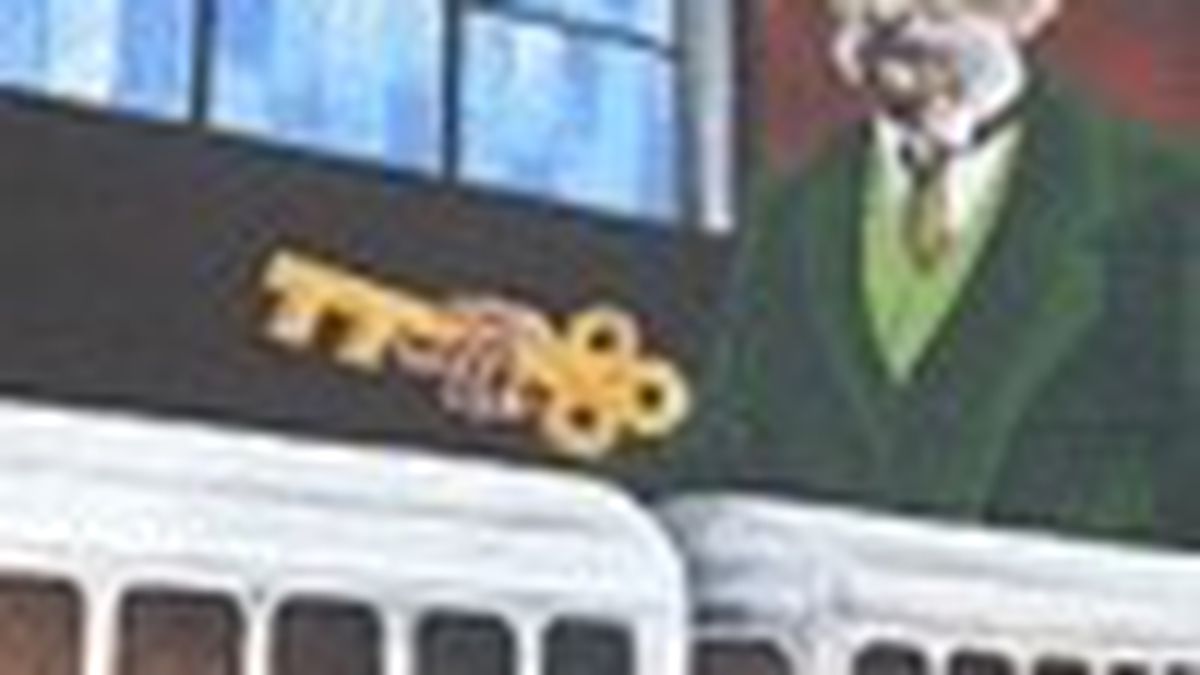Next time you’re stuck in traffic on the Bay Bridge, transfixed by the giant sucking sound of that $5 billion lunch break just beyond the guard rail, take a moment to think about the New Deal — when government money actually got things done. In the 1930s, at the height of the New Deal, commuters could ride an electric train from Piedmont Avenue in Oakland across the Bay Bridge to First and Mission streets in San Francisco. The trip on the Key System took 27 minutes. A smiling conductor would take your ticket and recite Yeats along the way to help you pass the time.
Can your BART do that?
Today, a century after the first Key System streetcar took its maiden voyage, a new mural by Oakland artist Rocky Baird has gone up on the side of the onetime rail terminal — now the J. Hamburger & Such diner — at 41st Street and Piedmont Avenue to commemorate just how far we haven’t come toward building a better commute. But, as Baird tells it, his visual history of the Key System, titled La Vida Electrica Se Mantiene Junta (The Electric Life Is Safe Together), is “not just about the trains.” Rather, the piece’s colorful allegorical style evokes the whole hopeful spirit of the great 1930s public art projects of the Works Progress Administration.
Baird describes the train as a “vessel,” an artistic container for all the lives with which the Key System was enmeshed. But in this exuberant mess of a painting, the vessel can hardly hold its contents. The entire Piedmont Avenue community past and present spills out in full, glorious color across the once-blank chunk of wall: workers and capitalists; soldiers and scientists; young and old; black, white, and brown; recent immigrants and the Ohlone over whose land the rails ultimately ran.
Like the WPA work they reference, these representative types mingle with portraits of actual figures from Key System history. Francis “Borax” Smith, the entrepreneurial founder of the system, looms over the scene, gold key in hand. Granville T. Woods, inventor of the electric third rail, cups a blue bolt of lightning in his hands.
A hagiography of businessmen and inventors might seem off-key for the East Bay, where so much public art is still rooted in a more confrontational 1960s politics of resistance and revolution, not to mention that era’s more flowery aesthetic. Some neighborhood cafe critics have even questioned whether La Vida Electrica is (gasp!) conservative, art that won’t offend a bourgeois part of town while it shops. The mural is decidedly a nostalgic piece in a nostalgic mode, with its narrative realism and generally positive attitude. But its politics, and its style, are more complicated than they may seem at first blush.
Tucked away in a corner of the piece, two business executives in silhouette seal a bloody handshake. According to Baird, the pair represents General Motors and Firestone. The companies didn’t want any pesky public transportation options cutting into their market share. So in 1958, they bought the Key System and shut it down. Elsewhere, a World War II infantryman carries a barrel marked “Petrol” to symbolize the wartime period of gas rationing that led to the system’s most vibrant period.
The mural eulogizes a time before cars overran the East Bay. But it does more than that. In style and substance, it mourns the loss of an entire sensibility: the old-fashioned New Deal belief in “cooperation” and “progress” and “the public good.”
History may have exposed the naïveté behind those ideas, especially for people of the wrong color. But it’s the underlying optimism La Vida Electrica strives to evoke, and what makes it feel relevant now, during the East Bay’s winter of political discontent. There was a time when people worked together to build something that profoundly improved their community — a public transportation system whose effectiveness the Bay Area has yet to duplicate. “If we’re lucky enough to get something similar thirty years from now, we’ll think it’s such a forward-looking thing,” Baird says.
Over the past several weeks, steady streams of passers-by stop to see Baird paint. They search the portraits for locals they recognize. Retirees tell a group of kids from a nearby elementary school about the Key System days. La Vida Electrica has neighbor talking to neighbor, a community coming together. It’s almost enough to make you, well, hopeful.














